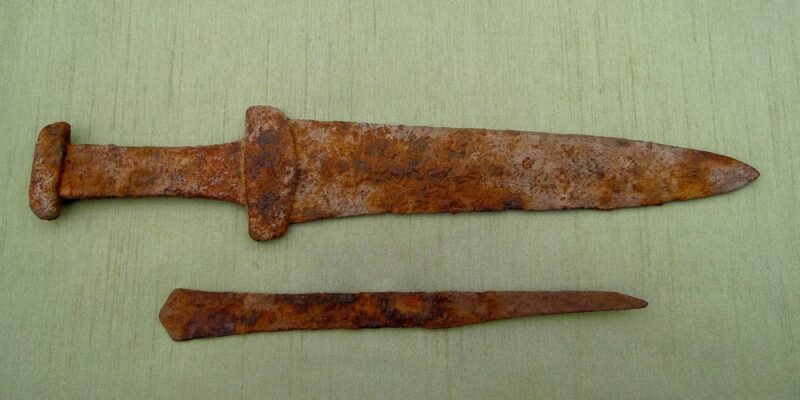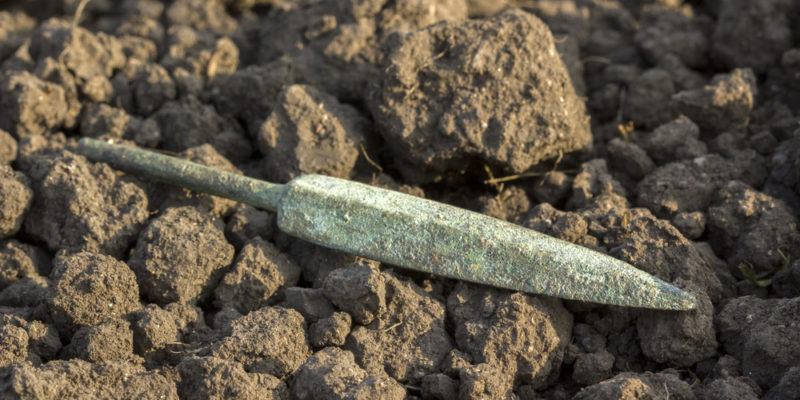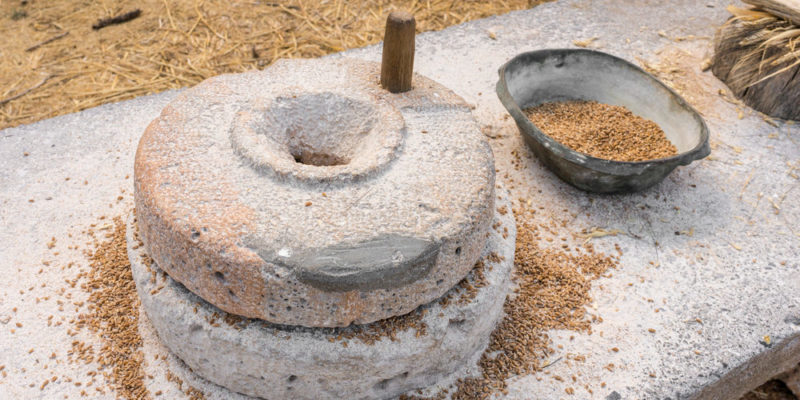We explain what the Metal Ages was, and discuss its characteristics and stages. In addition, we explore the most significant inventions of this period.

What is the Metal Ages?
The Metal Ages is a period in European and Asian prehistory spanning approximately between 6000 and 1000 BC, during which the first metalworking techniques were developed. It is divided into three stages: the Copper Age, the Bronze Age, and the Iron Age.
The Metal Ages was the period when human beings advanced intricate techniques to work metals, such as copper, bronze and iron. This skill allowed some civilizations to introduce other economic, social, and cultural changes.
Only a few cultures from the present-day territories of Europe, North Africa, and Asia Minor developed these techniques. Therefore, this historical dating is only valid for chronologically categorizing certain civilizations. Furthermore, the different populations that honed these techniques did so asynchronously. Thus, the periodization of metals should be taken broadly.
- See also: Prehistory
Characteristics of the Metal Ages

The Metal Ages was characterized by:
- Metalworking for the creation of utensils, tools for plowing the land, decoration, and jewelry.
- The advancement and improvement of agriculture through the use of stone and metal tools, as well as innovative techniques such as irrigation canals.
- The discovery of the alloying of metals through the combination of two or more elements, leading to the creation of bronze from the smelting of copper and tin.
- The use of various metals, including gold, silver, tin, and lead.
- The invention of the wheel dating back to the late Neolithic and early Metal Ages. It is believed to have been invented by the Sumerians, the oldest civilization in the Near East.
- The emergence of sedentary tribes that increased in both number and population density, giving rise to the earliest urban centers.
- The construction of dwellings and other types of buildings such as temples, storage spaces for goods, or communal areas for artisanal activity.
- The appearance of megaliths, for ritual or religious purposes, consisting of massive blocks of stone erected using some complex elevation system.
- The emergence of metallurgy as a trade, which spread gradually and slowly throughout the world.
Metal Ages timeline
The Metal Ages corresponds to a dating method based on the material remains of prehistoric populations. As archaeological studies deepened, dating methods evolved, and with them, the categorization of the different prehistoric periods. Today, specialists use the following periodization for Prehistory:
- Lower, Middle, and Upper Paleolithic. From the emergence of the first humans until 10000 BC. It is the longest stage in human history, characterized by the hominization process, hunting and gathering as the main subsistence methods, and a nomadic lifestyle in small groups.
- Epipaleolithic and Mesolithic. From 9000 BC to the beginning of the Neolithic in different parts of the world. Men were specialized hunter-gatherers with advanced stone working techniques. They had a seminomadic lifestyle.
- Neolithic. Beginning in 8000 BC in the Near East (later in other parts of the world) until the invention of the earliest metallurgical techniques. It encompasses the development of agriculture and animal husbandry, and the emergence of sedentism in small villages as a way of life.
- Metal Ages. Beginning in 6000 BC in the Near East (later in other parts of the world) until the emergence of writing. It is characterized by the advancement of techniques for working different metals, and includes three major stages: the Bronze Age (also known as Chalcolithic), the Copper Age, and the Iron Age. Some authors refer to the Metal Ages as Protohistory.
- See also: Mesolithic
Stages of the Metals Ages

The Metal Ages is a period for which no fixed and absolute dating can be established. The term is exclusively used in relation to populations in certain areas of the Near East, northern Egypt, and Europe. The development of metallurgical techniques by the different populations was uneven, and an exact date that would allow for a shared chronology for all cannot be precisely determined.
Nevertheless, a broad and indicative dating can be established, dividing the Metal Ages into the following stages:
- Copper Age or Chalcolithic. This stage marks the beginnings of copper metallurgy, the origin of urban life in the Near East (proto-urbanism), and the development of the first complex societies (having social hierarchies). Timelines vary according to location: while in the East the Chalcolithic begins around 5000 BC, in the Iberian Peninsula it begins in the 3rd millennium BC.
- Bronze Age. This stage roughly spans the period from 3000 to 800 BC. It was characterized by the discovery of alloying as a technique for smelting different metals. The alloying of copper with tin gave rise to bronze, a more durable metal. Urban life emerged in several European populations and chiefdoms appeared.
- Iron Age. This stage saw the emergence of the first states, the widespread use of iron for the manufacture of weapons and tools, and the transition to the historical era, with the invention of writing. As population density rose across territories, warfare increased, making iron a preferred substance in the development of metallurgical techniques.
- See also: Bronze Age
End of the Metal Ages
The end of the Metal Ages is marked by the invention and adoption of writing. With the first written records, Prehistory ends and History begins (with the period called Ancient history). However, the advent of writing occurred at different times for different populations, being often linked to the emergence of centralized states.
In the Near East, Prehistory ended around 3300 BC, with the emergence of Sumerian script at Uruk. In Egypt, it occurred around 3000 BC, with the rise of the first pharaonic dynasties and the appearance of the earliest written records in Abydos. In contrast, in Greece, the Metal Ages ended around 800 BC, and in Italy not until around 500 BC. In several regions of Northern Europe, the Iron Age extends up to the 6th century AD.
Major inventions of the Metal Ages

During the Metal Ages, major inventions were made, central to the growth, organization, and economy of different populations. Among them are:
- The stone furnace, used for smelting metals, crafting pottery, or heating food.
- Pottery, including the manufacture of molds for metal casting.
- The manufacture of weapons and armor for warfare.
- Weaving with single yarns.
- Irrigation canals to supply vast harvests.
- The grain mill for grinding cereals.
- Early boats, made of logs and, later, provided with a type of sail for wind propulsion, allowing for the transport of heavier goods.
- The wheel and, consequently, the cart as a basic transportation tool, making trade over greater distances possible.
Explore next:
References
- Eiroa, J. J. (2003). Nociones de prehistoria general. Grupo Planeta (GBS).
- Alimen, M. H., & Steve, M. J. (Eds.). (1989). Prehistoria (Vol. 1). Siglo XXI de España Editores.
- “The Metal Ages”. Britannica.
- “The Metal Ages”. Oxford UP.
- “¿Dónde se inventó la rueda y por qué tardó tanto en aparecer?”. BBC.
Was this information useful to you?
Yes NoThank you for visiting us :)